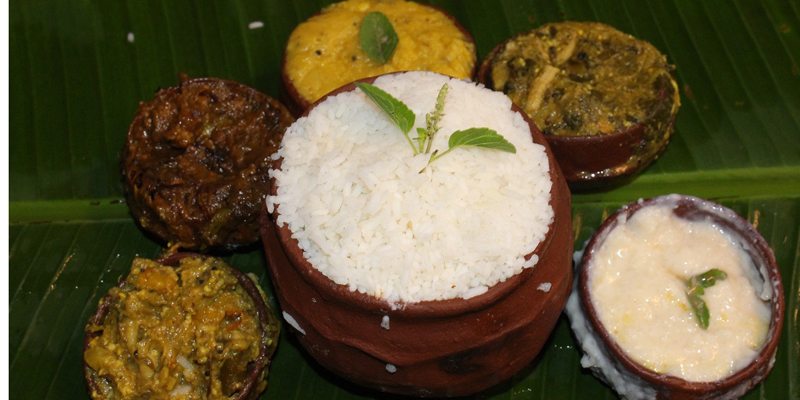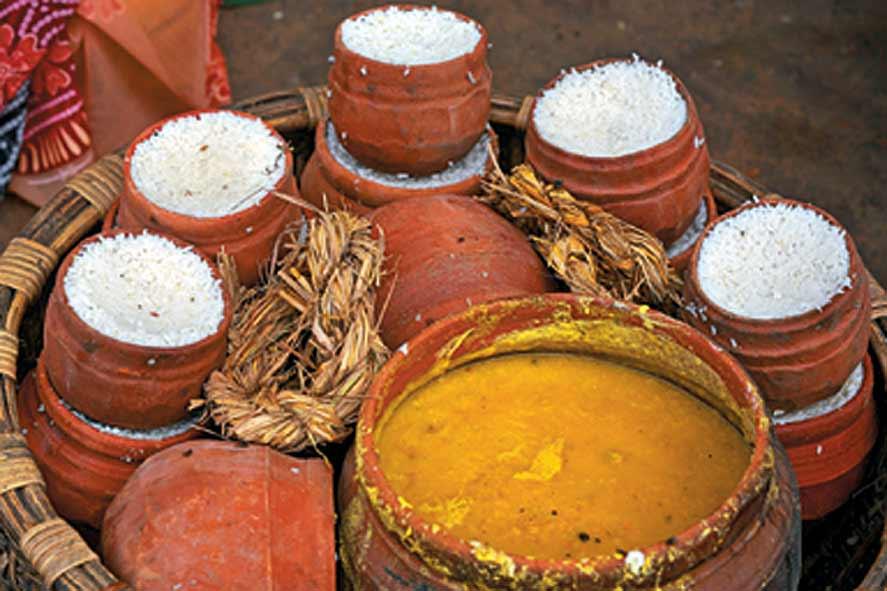Introduction
Welcome to the culturally vibrant state of Odisha, where ancient legends and traditions continue to merge seamlessly with modern life. Among the many fascinations this region offers, the culinary customs surrounding Mahaprasad and Nirmalya stand out as unique expressions of devotion and community bond. Join me on this captivating journey as we uncover the profound legends behind these sacred offerings and indulge in their delightful flavors.
The Divine Offering of Mahaprasad
In the heart of Odisha lies the magnificent Jagannath Temple, one of the four major pilgrimage sites for Hindu devotees. The revered temple is known not only for its architectural grandeur but also for its extraordinary Mahaprasad tradition. According to legends, this divine offering dates back centuries.
Legend has it that Lord Jagannath himself appeared in a dream to a saintly king, reminding him of an age-old promise. The king was to honor the deities by serving a sacred meal to each and every devotee, cutting across caste, religion, and social hierarchies. Thus, Mahaprasad came into being. Today, this auspicious feast is prepared with meticulous care, adhering to stringent rituals and customs.
The Enchanting Melange of Flavors
Mahaprasad embodies the essence of Odia cuisine, capturing a rich blend of flavors and textures. As we delve into this culinary treasure, we encounter a multitude of delicacies such as a variety of rice, dalma (a lentil stew cooked with vegetables), saga bhaja (fried spinach), khaja (a sweet crispy pastry), and so much more.
One significant delicacy is the Poda Pitha, a pancake-like preparation made with fermented rice, jaggery, and coconut. Legend has it that this dish was offered to Lord Jagannath during his exile. The tantalizing aroma and taste of these unique dishes intensify the spiritual experience.
More: Wanted to download Odishashop.com visit here

You can read our another post on Architecture of Odisha
The Sacred Transformation of Nirmalya
Another intriguing aspect of Odisha’s spiritual customs is the transformation of Nirmalya. Nirmalya refers to the leftover flowers and sacred materials used during temple rituals. In Odisha, these offerings are not discarded but instead transformed into blessed objects of reverence.
According to folklore, Lord Jagannath, in a divine gesture, wished to give his blessings to devotees even through these seemingly discarded flowers and items. Eventually, the Nirmalya is transformed into sacred ash, known as Bhabuta. This ash is considered spiritually potent and is said to have healing properties. Devotees collect it and keep it as a symbol of divine grace.
Conclusion
Odisha’s spiritual traditions unfold with awe-inspiring legends behind the Mahaprasad and Nirmalya customs. The Jagannath Temple serves as a living testament to these timeless legends and their profound impact on the lives of devotees. Exploring the flavors of Mahaprasad and understanding the spiritual significance of Nirmalya is a journey that offers a deep connection to the rich tapestry of Odia culture. So, wander through the enchanting temples and savor the divine tastes – let the legends and traditions of Odisha captivate your soul.

What is the legend behind Mahaprasad and Nirmalya in Odisha?
According to the legend, Lord Jagannath, the presiding deity of the Jagannath Temple in Puri, Odisha, once expressed his desire to visit his aunt, Goddess Lakshmi, who resides in the Gundicha Temple. During the Rath Yatra, the idol of Lord Jagannath is transported to the Gundicha Temple in a grand procession. Upon his arrival, Goddess Lakshmi prepares a sumptuous meal for her nephew, which is known as Mahaprasad.
What is Mahaprasad?
Mahaprasad is the sacred food offering prepared and served to Lord Jagannath in the Jagannath Temple, Puri, and distributed as prasadam to the devotees. It is considered highly auspicious and is believed to have the power to fulfill wishes. The Mahaprasad is prepared in strict rituals within the temple premises and comprises a variety of vegetarian dishes, including rice, lentils, vegetables, sweets, and desserts.
What is Nirmalya?
Nirmalya refers to the sacred remnants left behind by the deities after their daily rituals. It includes flower garlands, sandalwood paste, Tulsi leaves, and other offerings made to Lord Jagannath and his siblings – Lord Balabhadra and Devi Subhadra. Nirmalya is considered highly auspicious and is preserved within the temple premises. Devotees seek blessings by offering prayers and applying Nirmalya on their foreheads.
What is the significance of Mahaprasad and Nirmalya?
Mahaprasad and Nirmalya hold immense significance in Odisha’s culture and religious traditions. Mahaprasad is considered the divine offering blessed by Lord Jagannath, and consuming it is believed to purify the soul and grant spiritual upliftment. Nirmalya is considered sacred remnants of the deities and is believed to have healing and auspicious properties. Devotees consider it a privilege to receive and consume Mahaprasad and seek blessings by using Nirmalya.
How can devotees obtain Mahaprasad and Nirmalya?
Devotees can obtain Mahaprasad by visiting the Jagannath Temple in Puri. Once the daily rituals are completed, the Mahaprasad is distributed among the devotees. They can either partake in the temple premises or take it home as prasadam. However, it is important to remember that Mahaprasad is strictly vegetarian and is consumed without onion and garlic. Nirmalya, on the other hand, is usually offered to devotees as a part of the darshan (sight) of the deities or during special rituals conducted within the temple.
